
|
|
Font Size:
|
||||
|
|
|
|
||||
STATISTICAL BRIEF #240:
Prescription Drug Estimates for Medicare Beneficiaries, 2005 and 2006
Highlights
- Between 2005 and 2006, the proportion of the Medicare population that had at least one Medicare payment for one or more outpatient prescription drug purchases more than tripled, increasing from 21.2 percent to 68.6 percent.
- Medicare expenditures for outpatient prescription drugs were more than seven times as high in 2006 than the prior year rising from $5.9 to $44.3 billion.
- When comparing the source of payment distributions for outpatient prescribed drug expenditures for the Medicare population ($88.5 billion in 2005 and $96.3 billion in 2006) the Medicare proportion increased from 6.7 percent in 2005 to 45.3 percent in 2006, while the proportion paid by Medicaid (15.5 percent to 0.9 percent), out of pocket (43.3 percent to 31.3 percent) and other (9.3 percent to 6.0 percent) all decreased from 2005 to 2006.
- The average annual Medicare expenditure for outpatient prescribed drugs for the Medicare population in 2006 was more than seven times as high as the previous year--rising from $138 to $1,004.
Introduction
This Statistical Brief provides information on outpatient prescription drug estimates for Medicare beneficiaries in the U.S. civilian noninstitutionalized population prior to and after the implementation of Medicare Prescription Drug Coverage or Medicare Part D. Medicare is a health insurance program for people age 65 or older, people under age 65 with certain disabilities, and people of all ages with End-Stage Renal Disease (permanent kidney failure requiring dialysis or a kidney transplant). Medicare Prescription Drug Coverage or Medicare Part D is a program that started January 1, 2006, which offered and made available Medicare Prescription Drug Coverage to everyone with Medicare. Medicare beneficiaries were able to enroll in the drug plan of their choice.1For the years 2005 and 2006, this Brief presents the number of persons who reported having Medicare as well as total outpatient prescribed drug expenditures for the total population and the Medicare population. The Brief also compares the proportion of the Medicare population that reported at least one drug purchase and the proportion that had at least one Medicare payment for a prescribed drug. Moreover, the Brief compares the proportion of 2005 and 2006 total prescribed drug expenditures by source of payment for the Medicare population, and presents the average Medicare expenditure for prescribed drugs for the Medicare population for 2005 and 2006. All expenditure estimates are in nominal dollars.2
The estimates in this Brief are derived from the Household Component of the 2005 and 2006 Medical Expenditure Panel Survey (MEPS-HC). Only prescribed medicines purchases in an outpatient setting are included in the estimates. Insulin and diabetic supplies and equipment are included in MEPS prescribed medicines estimates. Over-the-counter medicines are excluded from these estimates as are prescription medicines administered in an inpatient setting or in a clinic or physicians office. All differences discussed in the text are statistically significant at the 0.05 percent level.
Findings
In 2005, there were 296.2 million persons in the U.S. noninstitutionalized civilian population and 42.7 million reported having Medicare coverage. In 2006, the total U.S. noninstitutionalized civilian population was 299.3 million persons and 43.4 million people reported having Medicare coverage (figure 1).When comparing 2005 and 2006, total Medicare expenditures on outpatient prescription drugs increased from $5.9 billion to $44.3 billion while total prescription drug expenditures did not have a significant increase ($213.2 billion versus $223.3 billion) (figure 2).
In 2005, 91.0 percent of Medicare beneficiaries reported one or more outpatient prescription drug purchases and 21.2 percent of Medicare beneficiaries reported having a Medicare payment for one or more prescription drug purchases. In 2006, 91.2 percent of the Medicare beneficiaries reported one or more prescription drug purchases and 68.6 percent reported one or more payments by Medicare for one or more prescription drug purchases (figure 3).
When comparing the source of payment distributions for outpatient prescribed drug expenditures for Medicare beneficiaries for the years 2005 and 2006 ($88.5 billion in 2005 and $96.3 billion in 2006) by source of payment, Medicare was the only source with an increased proportion. The Medicare proportion increased from 6.7 percent to 45.3 percent while the proportion paid by Medicaid, out of pocket, and other decreased (15.5 percent to 0.9 percent, 43.3 percent to 31.3 percent, and 9.3 percent to 6.0 percent, respectively) (figure 4).
In 2006, the average Medicare expenditure for outpatient prescription drugs for the Medicare population was more than seven times as high as the prior year, rising from $138 to $1,004, while the total mean expenditure for prescribed drugs for the Medicare population for the same years did not significantly increase ($2,072 and $2,217) (figure 5).
Data Source
The estimates shown in this Statistical Brief are based on data from MEPS HC-094A: 2005 Prescribed Medicines File, HC-102A: 2006 Prescribed Medicines File, HC-097: 2005 Full Year Consolidated File, and HC-105: 2006 Full Year Consolidated File.Definitions/Methodology
Utilization and expendituresUtilization was defined as one or more purchases of a prescribed medicine of interest. Refills as well as original prescriptions are included in expenditure and utilization estimates. Individuals were classified as using a prescribed medicine of interest if they had one or more purchases of the drug of interest during the year. Expenditures are in nominal dollars. If preferred, 2005 dollars can be inflated to 2006 dollars with the use of the GDP Price Index, National Income and Product Accounts, Bureau of Economic Analysis, available at http://www.bea.gov/national/nipaweb/SelectTable.asp?Selected=Y then select "Table 1.1.9 Implicit Price Deflators for Gross Domestic Product (A) (Q)", or use the CPI Index, All Urban Consumers, All Items, Bureau of Labor Statistics, available at http://data.bls.gov/cgi-bin/surveymost?cu.
Medicare population
People were considered Medicare beneficiaries if they ever reported being covered by Medicare during the year.
Sources of payment categories
Out of pocket--This category includes expenses paid by the user or other family member.
Private insurance--This category includes payments made by insurance plans covering hospital and medical care (excluding payments from Medicare, Medicaid, and other public sources). Payments from Medigap plans or TRICARE (Armed Forces-related coverage) are included. Payments from plans that provide coverage for a single service only, such as dental or vision coverage, are not included.
Medicare--Medicare is a federally financed health insurance plan for the elderly, persons receiving Social Security disability payments, and persons with end-stage renal disease. Medicare Part A, which provides hospital insurance, is automatically given to those who are eligible for Social Security. Medicare Part B provides supplementary medical insurance that pays for medical expenses and can be purchased for a monthly premium. Medicare Prescription Drug Coverage is a program that was started January 1, 2006, which offered and made available Medicare prescription drug coverage to everyone with Medicare.
Medicaid/SCHIP--Medicaid and SCHIP are means-tested government programs jointly financed by Federal and state funds that provide health care to those who are eligible. Medicaid is designed to provide health coverage to families and individuals who are unable to afford necessary medical care while SCHIP provides coverage to additional low income children not eligible for Medicaid. Eligibility criteria for both programs vary significantly by state.
Other sources--This category includes payments from the Department of Veterans Affairs (except TRICARE); other federal sources (Indian Health Service, military treatment facilities, and other care provided by the Federal Government); various state and local sources (community and neighborhood clinics, state and local health departments, and state programs other than Medicaid/SCHIP); Workers Compensation; various unclassified sources (e.g., automobile, homeowners, or other liability insurance, and other miscellaneous or unknown sources); Medicaid/SCHIP payments reported for persons who were not reported as enrolled in the Medicaid or SCHIP programs at any time during the year; and private insurance payments reported for persons without any reported private health insurance coverage during the year.
About MEPS-HC
MEPS-HC is a nationally representative longitudinal survey that collects detailed information on health care utilization and expenditures, health insurance, and health status, as well as a wide variety of social, demographic, and economic characteristics for the U.S. civilian noninstitutionalized population. It is cosponsored by the Agency for Healthcare Research and Quality and the National Center for Health Statistics.For more information about MEPS, call the MEPS information coordinator at AHRQ (301-427-1656) or visit the MEPS Web site at http://www.meps.ahrq.gov/.
References
For a detailed description of the MEPS-HC survey design, sample design, and methods used to minimize sources of nonsampling error, see the following publications:Cohen, J. Design and Methods of the Medical Expenditure Panel Survey Household Component. MEPS Methodology Report No. 1. AHCPR Pub. No. 97-0026. Rockville, MD: Agency for Health Care Policy and Research, 1997. http://www.meps.ahrq.gov/mepsweb/data_files/publications/mr1/mr1.shtml
Cohen, S. Sample Design of the 1996 Medical Expenditure Panel Survey Household Component. MEPS Methodology Report No. 2. AHCPR Pub. No. 97-0027. Rockville, MD: Agency for Health Care Policy and Research, 1997. http://www.meps.ahrq.gov/mepsweb/data_files/publications/mr2/mr2.shtml
Cohen, S. Design Strategies and Innovations in the Medical Expenditure Panel Survey. Medical Care, July 2003: 41(7) Supplement: III-5-III-12.
Ezzati-Rice, TM, Rohde, F, Greenblatt, J, Sample Design of the Medical Expenditure Panel Survey Household Component, 1998-2007. Methodology Report No. 22. March 2008. Agency for Healthcare Research and Quality, Rockville, MD. http://www.meps.ahrq.gov/mepsweb/data_files/publications/mr22/mr22.pdf
Suggested Citation
Stagnitti, M. N. Prescription Drug Estimates for Medicare Beneficiaries, 2005 and 2006. Statistical Brief #240. March 2009. Agency for Healthcare Research and Quality, Rockville, MD. http://www.meps.ahrq.gov/mepsweb/data_files/publications/st240/stat240.pdfAHRQ welcomes questions and comments from readers of this publication who are interested in obtaining more information about access, cost, use, financing, and quality of health care in the United States. We also invite you to tell us how you are using this Statistical Brief and other MEPS data and tools and to share suggestions on how MEPS products might be enhanced to further meet your needs. Please e-mail us at mepspd@ahrq.gov or send a letter to the address below:
Steven B. Cohen, PhD, Director
Center for Financing, Access, and Cost Trends
Agency for Healthcare Research and Quality
540 Gaither Road
Rockville, MD 20850
1 Overview Medicare Program - General Information - Centers for Medicare and Medicaid Services website. http://www.cms.hhs.gov/MedicareGenInfo/
2 Expenditures are in nominal dollars. 2005 dollars can be inflated to 2006 dollars using the GDP Price Index, National Income and Product Accounts, Bureau of Economic Analysis, available at http://www.bea.gov/national/nipaweb/SelectTable.asp?Selected=Y then select "Table 1.1.9 Implicit Price Deflators for Gross Domestic Product (A) (Q)", or use the CPI Index, All Urban Consumers, All Items, Bureau of Labor Statistics, available at http://data.bls.gov/cgi-bin/surveymost?cu.
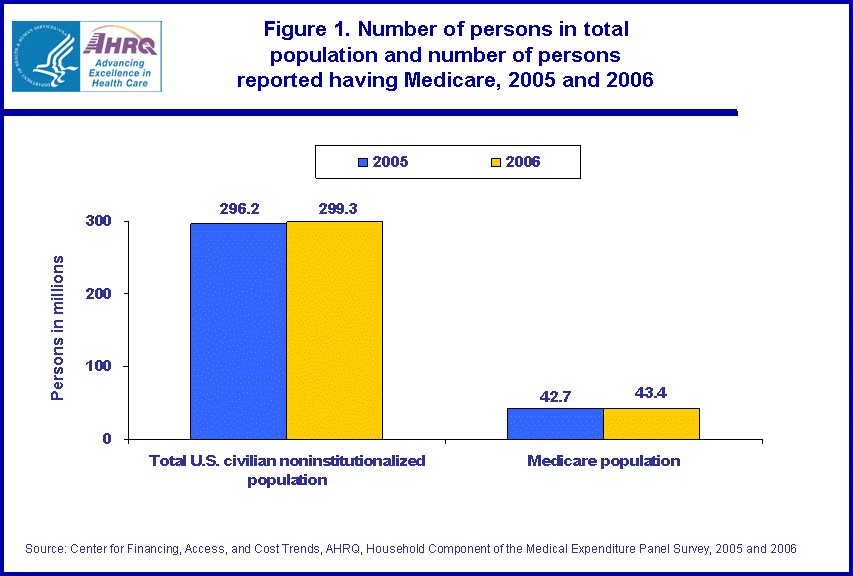 |
|||||||||||||||||||||||||||||||||||
|
|||||||||||||||||||||||||||||||||||
|
|
|||||||||||||||||||||||||||||||||||
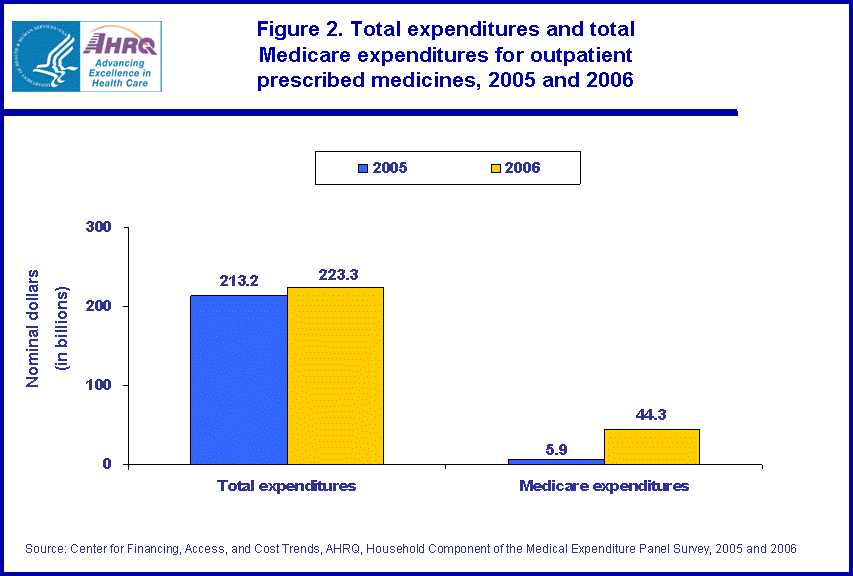 |
|||||||||||||||||||||||||||||||||||
|
|||||||||||||||||||||||||||||||||||
|
|
|||||||||||||||||||||||||||||||||||
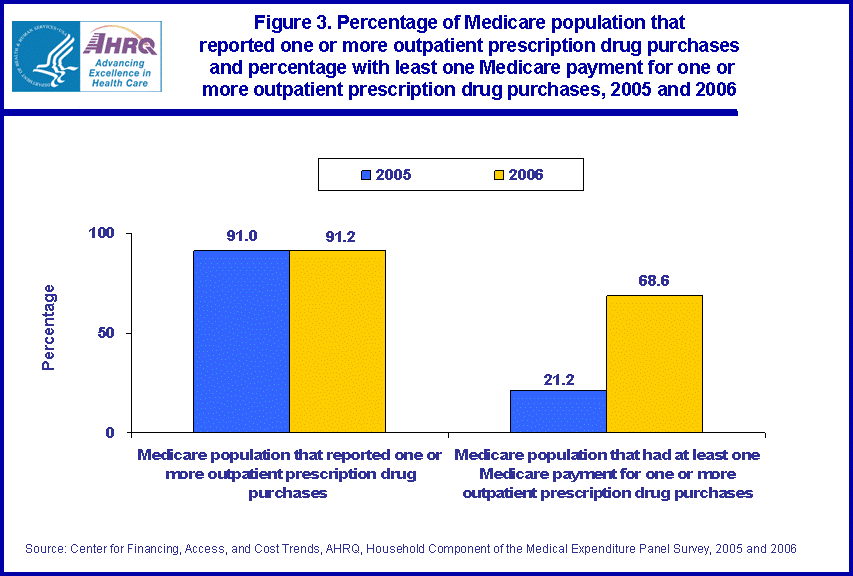 |
|||||||||||||||||||||||||||||||||||
|
|||||||||||||||||||||||||||||||||||
|
|
|||||||||||||||||||||||||||||||||||
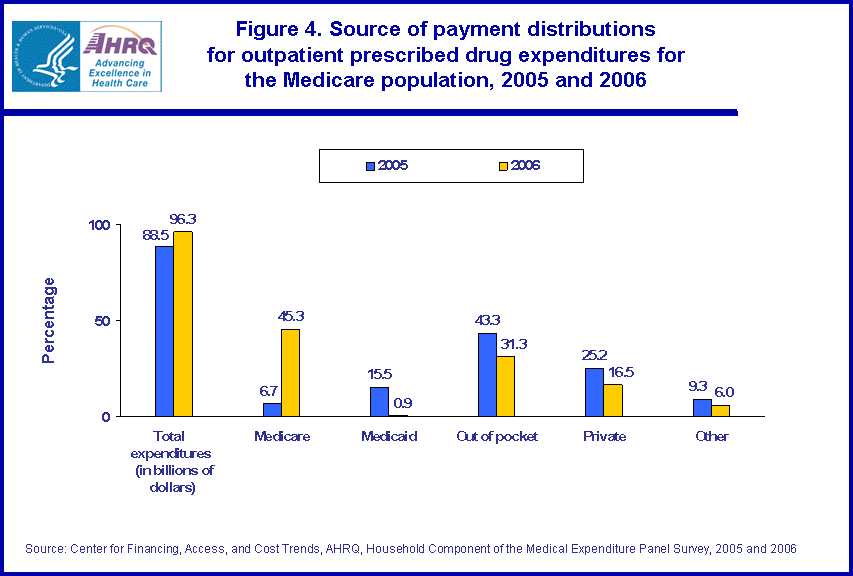 |
|||||||||||||||||||||||||||||||||||
|
|||||||||||||||||||||||||||||||||||
|
|
|||||||||||||||||||||||||||||||||||
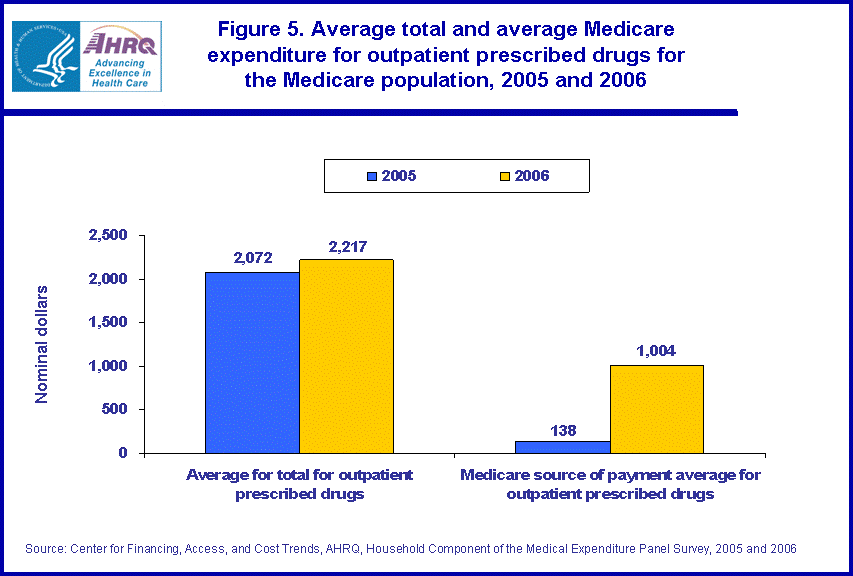 |
|||||||||||||||||||||||||||||||||||
|
|||||||||||||||||||||||||||||||||||
|
|
|||||||||||||||||||||||||||||||||||


